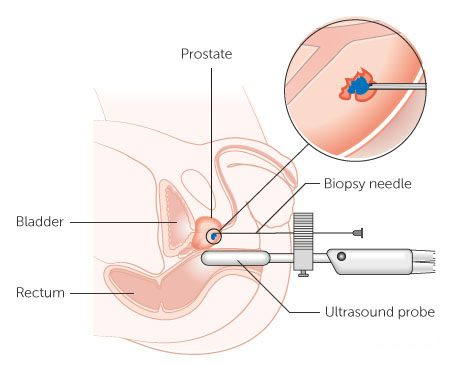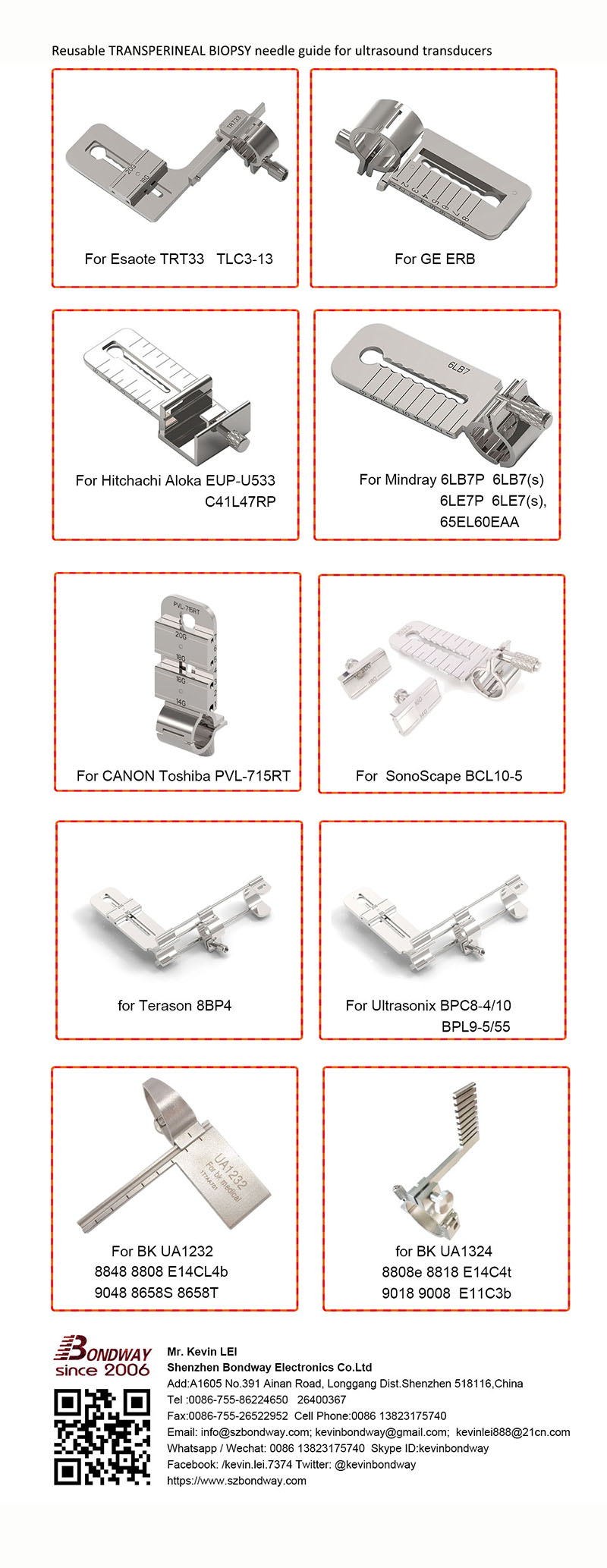Transperineal biopsy (biopsy needle brackets-reusable biopsy needle guide for perinium biopsy)
Your doctor might take small samples of tissue from your prostate to help diagnose prostate cancer. They can do this during a transperineal biopsy.
What is a transperineal biopsy?
This test is a needle biopsy to look for cancer cells in the prostate. Your doctor puts a needle into the prostate through the skin behind the testicles (perineum). They take a number of samples, which are sent to the lab to be looked at under a microscope.
This type of procedure can sometimes find a prostate cancer that has been missed by other types of biopsy.

Diagram showing a prostate biopsy
Preparing for your biopsy
You have the biopsy under local or general anaesthetic.
Having the biopsy under local anaesthetic means you should be able to eat and drink normally before the test.
Having the biopsy under general anaesthetic means that you won’t be able to eat or drink for a number of hours beforehand. You usually stop eating at least 6 hours before the biopsy and stop drinking at least 4 hours beforehand. Your team will give you instructions.
Take your usual medicines as normal, unless you have been told otherwise. If you take warfarin to thin your blood, you should stop this before your biopsy. Your doctor will tell you when to stop taking it.
You have antibiotics to stop infection developing after the biopsy. You have them before the biopsy and for a few days afterwards.
You might have a tube (catheter) into your bladder to drain urine.
Your doctor will ask you to sign a consent form once you have all the information about the procedure.
What happens
You might have your biopsy under local or general anaesthetic. If you have it under general anaesthetic, you will be asleep during the whole procedure. This means that you won’t feel or hear anything. You might feel a bit drowsy or confused when you wake up.
If you have it under local anaesthetic, the doctor injects an anaesthetic into the perineum. This numbs the area.
They put an ultrasound probe into your back passage to show the prostate gland. They use the ultrasound to guide a biopsy needle through the perineum and into the prostate. Doctors may also use the results of your MRI scan to help them work out where to take the biopsies from. They then take a small number of samples.
Sometimes doctors may decide to take between 30 to 50 samples. This is called a transperineal template biopsy. They use a template (or grid) with lots of holes over your perineum and guide the needle through the template.
After the biopsy
You can normally go home the same day.
You need to be in hospital for at least a few hours after a general anaesthetic, until you have fully recovered. This normally means until you have had something to eat and drink and passed wee (urine) normally. The team looking after you make sure any pain is under control before you go.
You can’t drive home if you have had a general anaesthetic because it takes some time to recover.
It is very important to drink a lot of fluids for the next 24 hours.
Side effects
Transperineal biopsies are safe tests but there are some possible side effects. Side effects might include:
*bleeding
*infection
*pain
Drinking plenty of water flushes out the blood and helps to stop you from getting any infection. Contact your doctor straight away or go to the accident and emergency department (A&E) if you have signs of infection, such as:
*a high temperature
*difficulty passing urine
*a need to pass urine very often
*a lot of blood in your urine or poo
*shivering or shaking
You need to have antibiotics straight away if you have a urine infection.
Reusable biopsy needle brackets (biopsy needle guide) for transperineal biopsy purpose available for you to choose from

Shenzhen Bondway Electronics Co. Ltd
2021-2-20
 English
English
 中文
中文 Français
Français
 Español
Español Pусский
Pусский





副本.png?imageView2/2/w/200/h/150/q/60)


